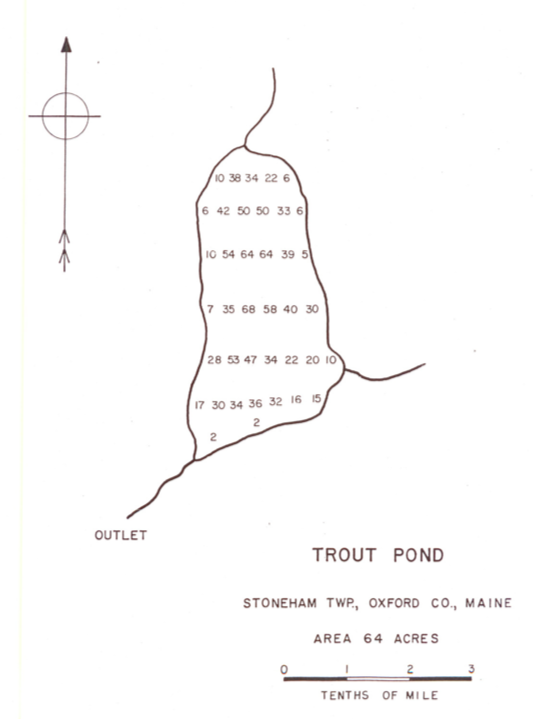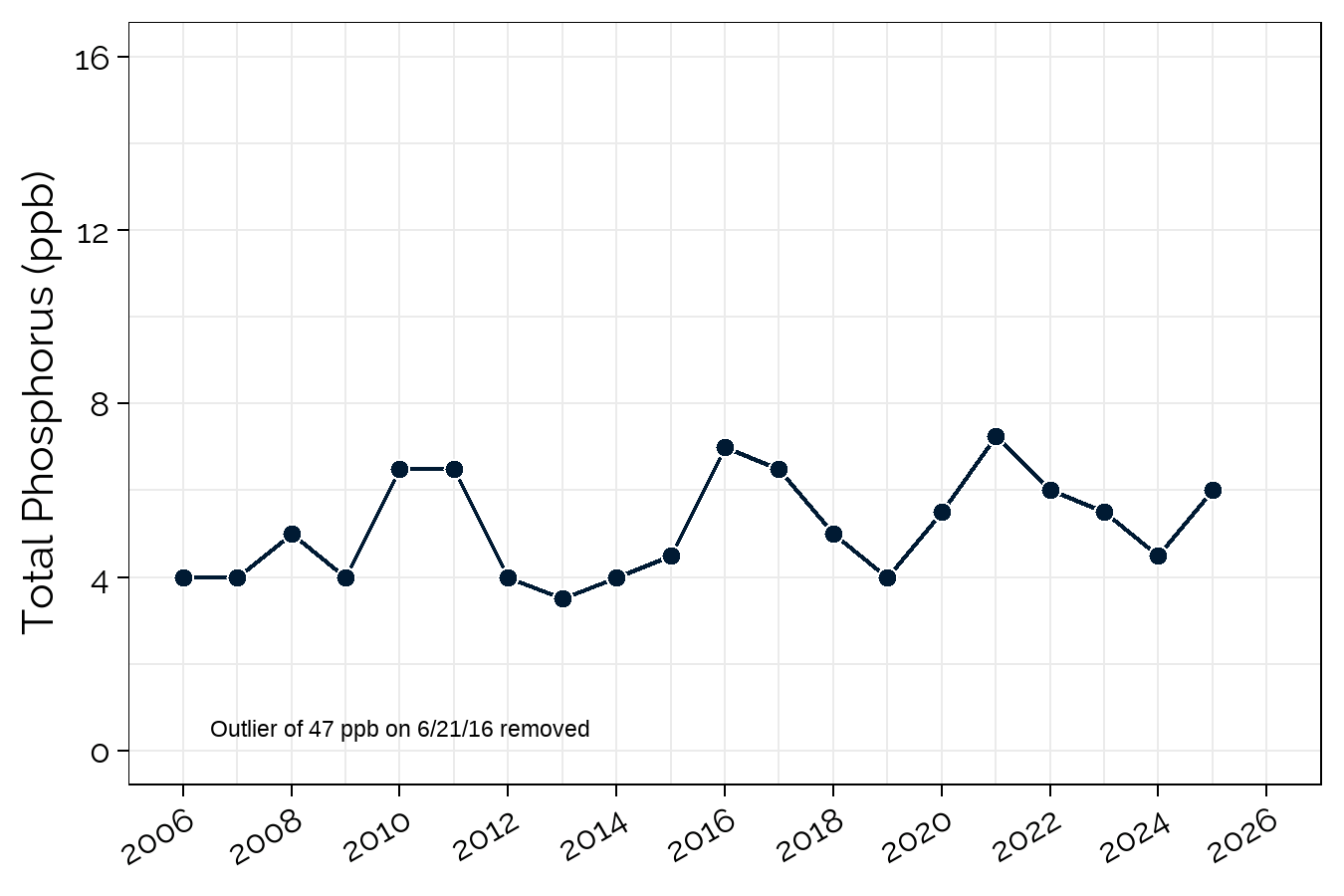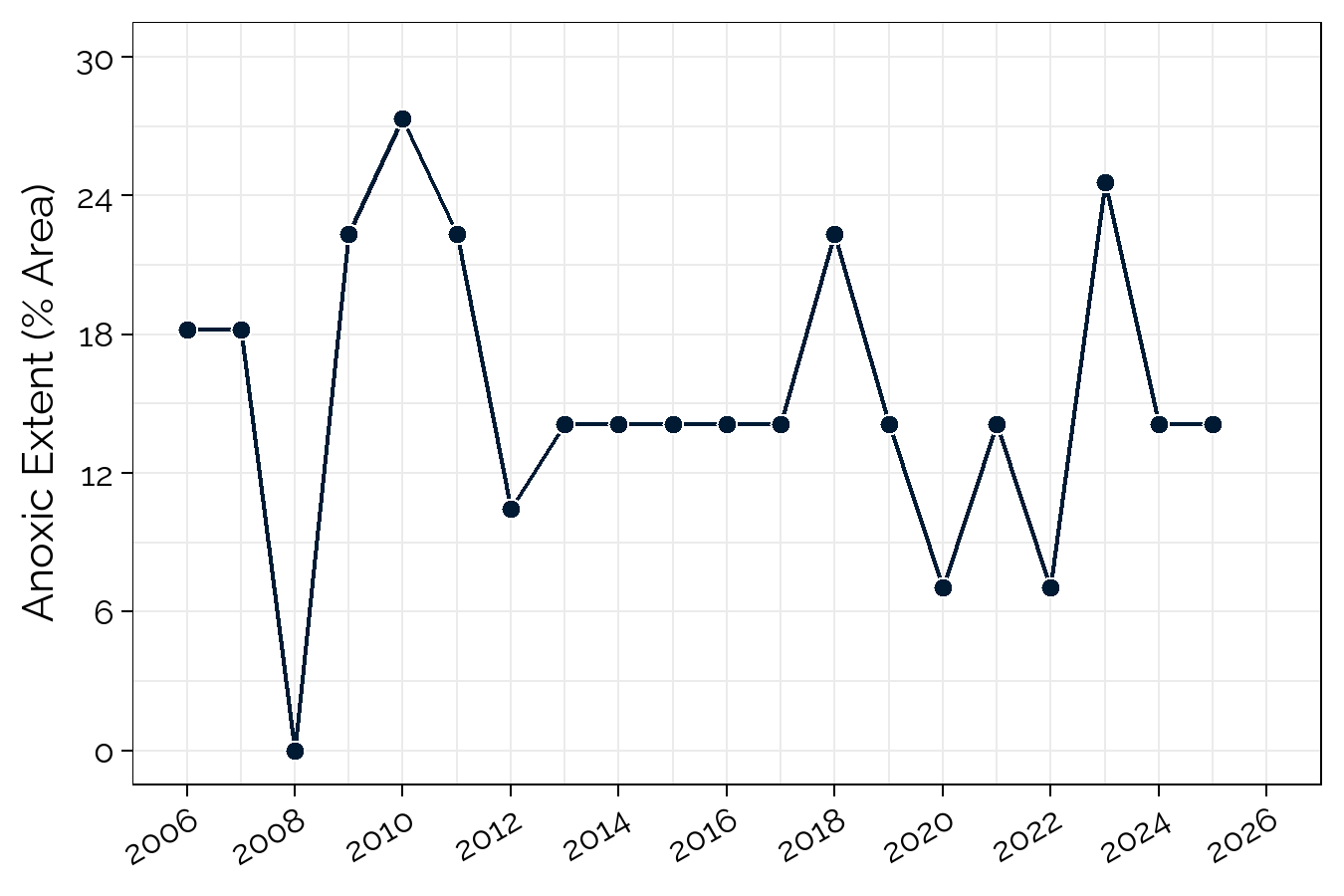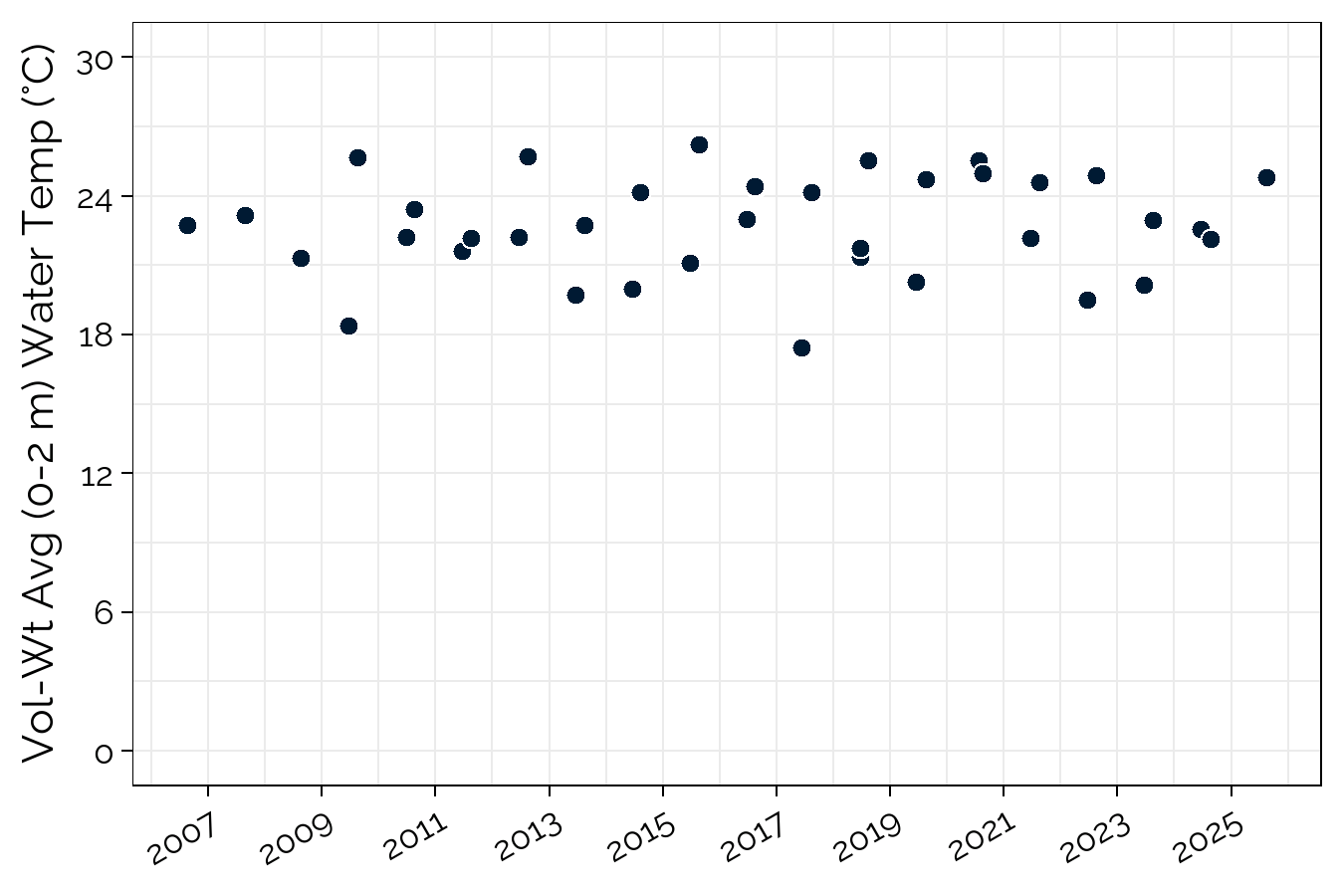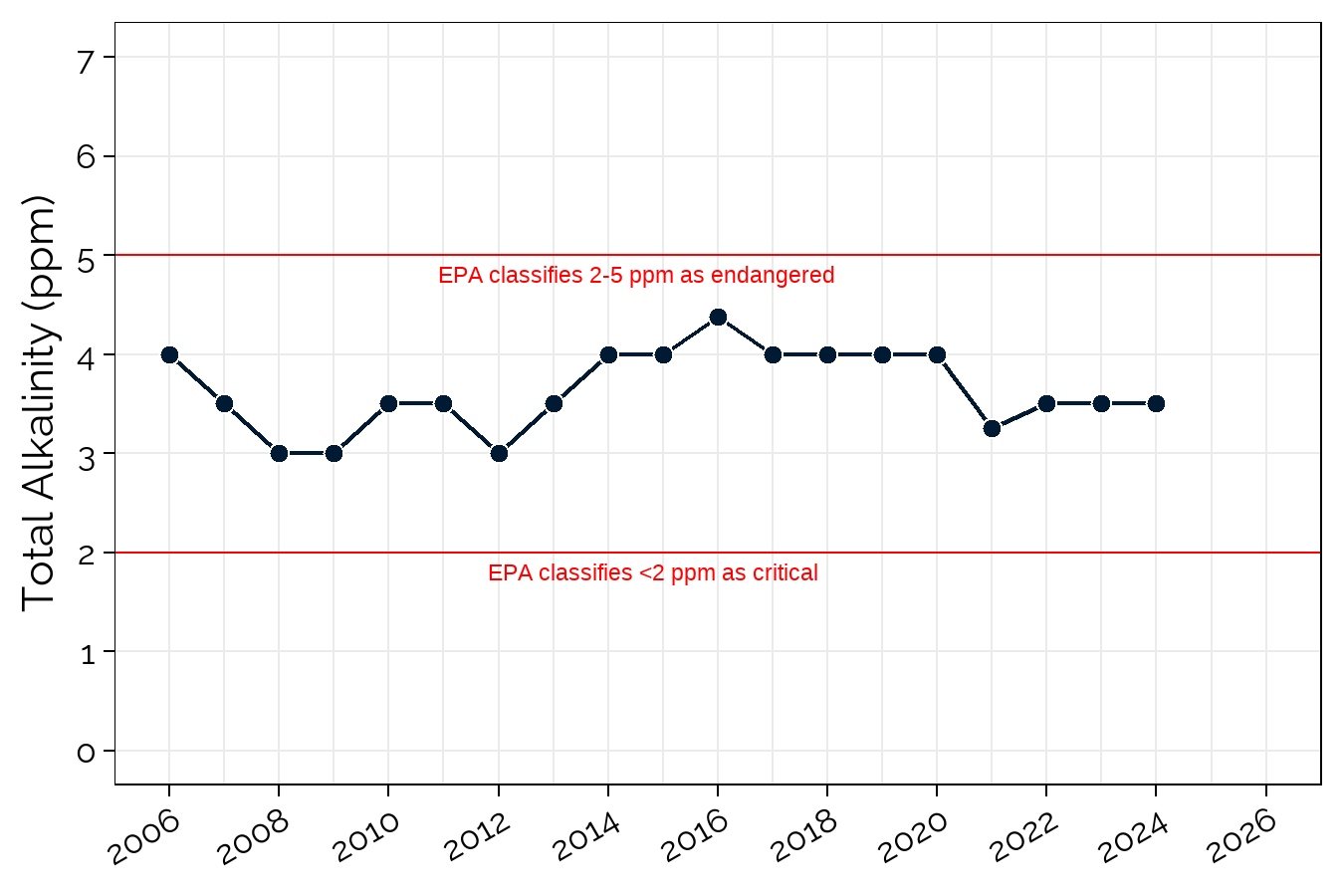Trout Pond
Located in Stoneham, Trout Pond is the eastern–most pond in the watershed. It covers 64 acres and reaches a depth of 68 feet. Principal fisheries are brook trout and splake. Trout Pond has a pristine, sylvan aura as the only development on the pond is Camp Susan Curtis, a non–profit summer camp dedicated to serving economically disadvantaged Maine youth.
Trout Pond (Midas #3212) flows into Cushman Pond, its near neighbor to the south, which in turn drains to Heald Pond, then to a tributary to Boulder Brook and eventually Kezar Lake. Water quality monitoring data have been collected since 1997 at the deepest spot.
water quality
water clarity
Since 1997, water clarity at Trout Pond has degraded by over one meter. Trout Pond has the deepest water clarity compared to the other ponds.
total phosphorus
Since 2006, total phosphorus at Trout Pond has revealed no statistically significant trend. Trout Pond experiences the lowest concentration of total phosphorus compared to the other ponds.
chlorophyll-a
Since 2006, chlorophyll-a at Trout Pond has ranged from about 1 to 4 ppb. Trout Pond experiences the lowest concentration of chlorophyll-a compared to the other ponds.
anoxic extent
Dissolved oxygen profiles show oxygen depletion beginning at 15 meters below the water surface. The extent of anoxia is overall good at Trout Pond (occasionally affecting >10% of pond area). However, 2023 saw the highest anoxic extent since 2010. Dissolved oxygen at depth should continue to be monitored closely in the future.
temperature
The volume-weighted average surface water temperature for the top 2 meters does not show a statistically significant trend.
ph
Since 2006, pH at Trout Pond has revealed no statistically significant trend. Mean annual pH falls within acceptable ranges for aquatic life but hit record low in 2017. Low alkalinity makes Trout Pond susceptible to changes in pH, particularly from acidic deposition in the form of rain or snow, which can jeopardize the health of freshwater fish species.
Total Alkalinity
Since 2006, total alkalinity at Trout Pond has remained stable. The region has naturally-low alkalinity (or buffering capacity) as a result of its contributing geology (i.e., granite) that lacks carbonates, bicarbonates, and carbonic acid.
color
Since 2006, color at Trout Pond has generally remained stable. Trout Pond has the lowest (best) color compared to the other ponds. Higher color was observed for 2012 and 2023, likely due to the wet summer conditions. Color is highly related to summer precipitation; wetter years show higher color as more materials are washed off the landscape to the pond.


